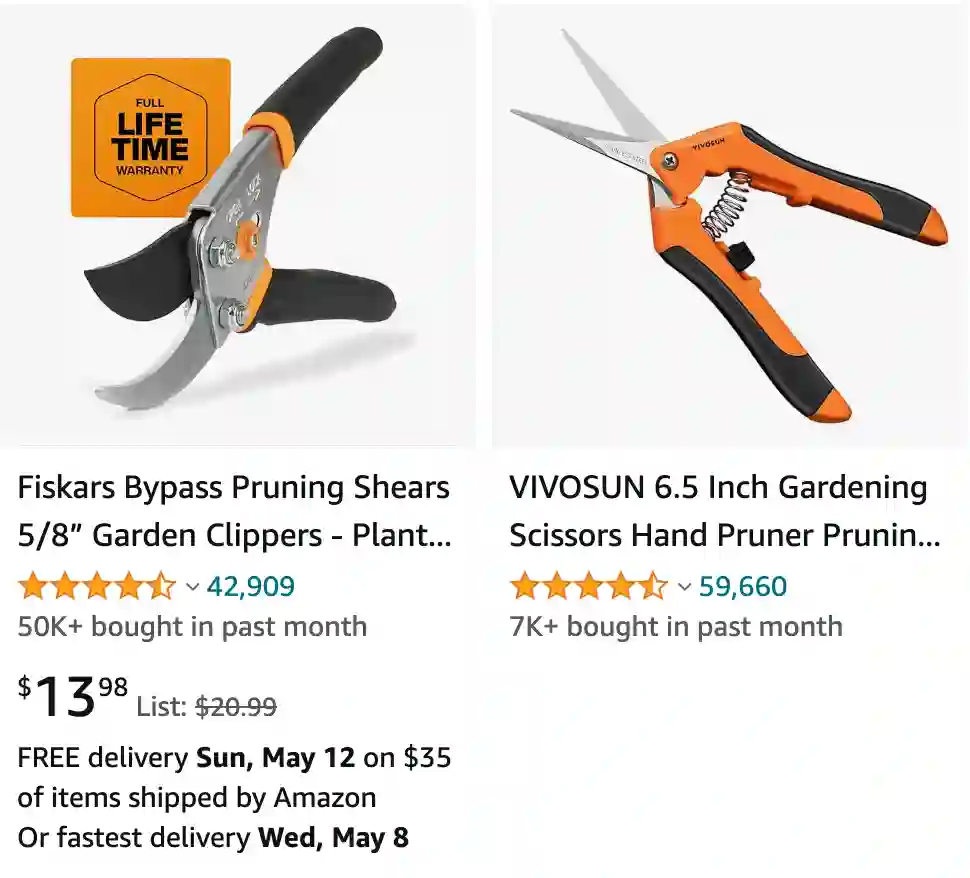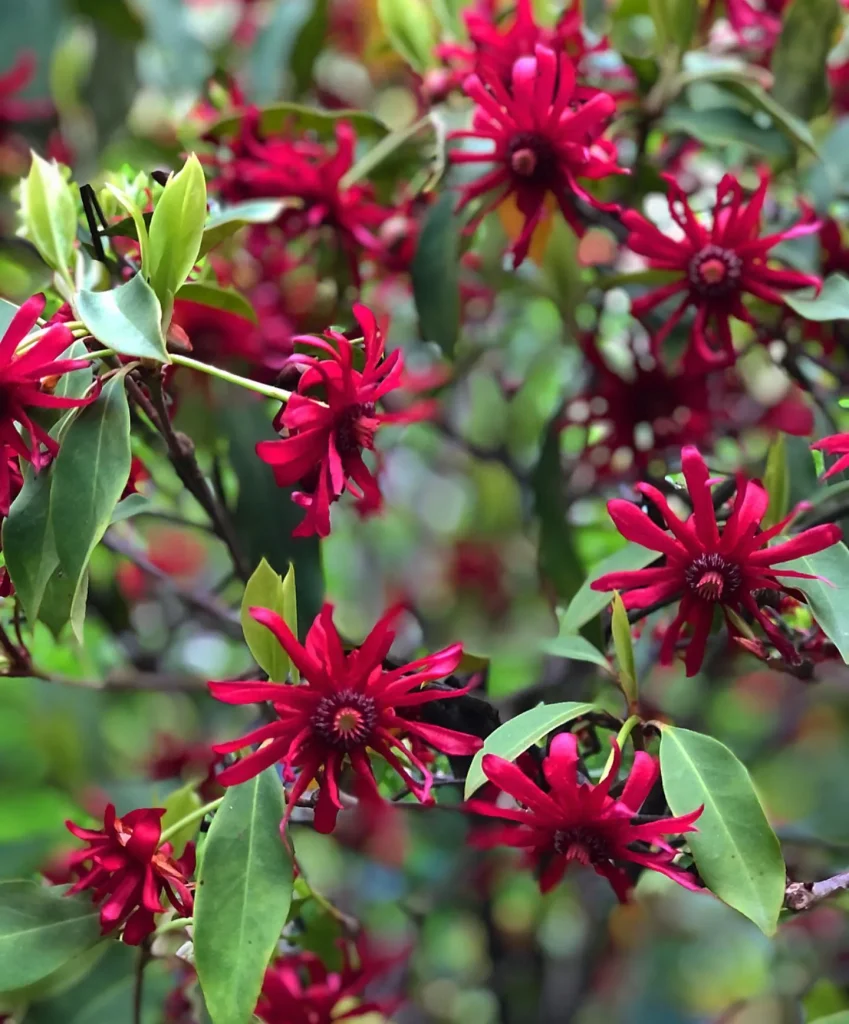
How to sharpen pruning shears?
I never used to sharpen my pruning shears myself. Big mistake! My cuts were always ragged, leaving the poor plants looking wince-worthy. Finally, a friend showed me the ropes. It turns out it’s not that complicated, especially with a diamond sharpening tool. Now, I secure the shears in a vise (makes things easier) and hold the diamond tool at the right angle – that takes a little practice – then just swipe it along the bevel a few times. The difference is amazing! Clean cuts with minimal effort, and my plants thank me for it.
How to clean pruning shears?
My pruning shears used to get gunked up with sap and dirt after a long day in the garden, making them sticky and sluggish. Now, I’ve got a cleaning routine that keeps them running smoothly. First, I wipe off any major grime with a rag. Then, I grab an old toothbrush and some soapy water. I get in there and scrub between the blades and all the nooks and crannies, rinsing often. For stubborn sap, I might use a little rubbing alcohol – that stuff works wonders! Once everything’s sparkling clean, I dry them completely with a towel before storing them away. It takes just a few minutes, but it makes a huge difference in how well they function next time I need to tame my overgrown bushes.
How to sterilize pruning shears?
After a brush with a diseased plant, I don’t want to risk spreading nasties to my healthy ones. So, I’ve come to rely on good old rubbing alcohol for sterilizing my pruning shears. It’s quick, easy, and doesn’t require any fancy solutions. I simply pour some rubbing alcohol (70% is what I use) into a small container. Then, I dunk the blades (and any other parts that might have touched the diseased plant) into the alcohol for a few seconds. I take them out, give them a good wipe with a clean rag, and let them air dry completely. The whole process takes barely a minute, and it gives me peace of mind knowing my shears are disinfected and ready for the next healthy cut.
What are bypass pruning shears?
Ah, bypass pruners! Those are my go-to shears for most things in the garden. They work like fancy scissors, with two sharp blades that bypass each other when you squeeze the handles. Unlike anvil pruners, which can crush stems, bypass pruners make clean cuts that are better for the plant’s health.
I find them perfect for trimming rose bushes, deadheading flowers, and shaping small shrubs. The clean cuts seem to help the plants heal up faster, and there’s less chance of them getting stressed or diseased. Plus, the bypass action feels smooth and easy on my hands, which is a bonus after a long day of pruning!
What are the best pruning shears?
That’s a tough one! There are so many great pruners out there, but the best ones really depend on what you’ll be using them for and your own preferences. Here are a few of my favorites, each with something special to offer:
- Felco No. 6 Bypass Pruner– This is my all-around favorite pruner. It’s comfortable to hold, cuts like butter, and is super durable. They’re a bit of an investment, but they’re built to last a lifetime and you can even replace parts if something breaks.
- Corona ClassicCUT Bypass Pruner– This is a fantastic option for someone on a budget. It’s not as fancy as some other pruners, but it gets the job done and is surprisingly sturdy. Perfect for heavy-duty tasks like pruning thick branches.
- Fiskars PowerGear2 Softgrip Bypass Pruner– If you have carpal tunnel or arthritis, then these pruners are a game-changer. The gears make it much easier to squeeze, so you don’t have to put as much strain on your hands. Plus, the grips are really comfortable.
- ARS VS8Z Bypass Pruner– These pruners are known for their incredibly sharp blades. They’re perfect for delicate cuts or if you just want a pruner that glides effortlessly through stems.
Ultimately, the best way to find the perfect pruner for you is to try out a few different ones and see which one feels the most comfortable and effective in your hands. Happy pruning!
How to adjust fiskars pruning shears?
While I haven’t personally adjusted my Fiskars pruners myself, I’ve learned from some trial and error (and maybe a bent branch or two) that there’s a knack to it. Luckily, Fiskars pruners are designed to be adjustable, so you can fine-tune the tension for a smooth and clean cut.
From what I’ve gathered online, there usually is a nut or bolt near the joint of the handles. You’ll likely need a screwdriver or pliers (depending on the model) to tighten or loosen it. The key is finding the sweet spot – not too loose that the blades flop around, but not so tight that it takes all your strength to squeeze.
Here’s my plan for when I finally tackle adjusting mine:
- Identify the adjustment point: First, I’ll consult the Fiskars manual (or their website) to pinpoint the exact location of the adjustment nut or bolt on my specific pruner model.
- Small adjustments: I’ll start with very small adjustments, tightening just a quarter turn at a time. After each adjustment, I’ll test the tension by opening and closing the shears.
- Finding the sweet spot: The goal is for the blades to meet cleanly with minimal resistance when closed, but still hold their position when slightly open. It might take some back-and-forth tweaking to find that perfect balance between smooth operation and secure closure.
Remember, if you’re unsure or uncomfortable doing it yourself, you can always take your Fiskars pruners to a garden center and have a professional take a look.
What are pruning shears used for?
My trusty pruning shears are like an extension of my arm in the garden! I use them for all sorts of tasks to keep my plants happy and healthy. Here’s a breakdown of their main jobs:
- Taming overgrown bushes: Need to keep those shrubs in check? Pruning shears are perfect for snipping off stray branches and shaping them up.
- Deadheading spent flowers: Pruning shears help me deadhead flowers, removing those past-their-prime blooms. This encourages the plant to keep producing beautiful flowers throughout the season.
- Making clean cuts: For healthy plant growth, clean cuts are essential. Pruning shears make precise cuts that are better for the plant than hacking away with something less suited for the job.
- Harvesting herbs and fruits: My shears come in handy when I need to snip fresh herbs like rosemary or harvest plump berries. The clean cuts help prevent damage to the plant and ensure a good future harvest.
- Encouraging healthy growth: By removing diseased branches or overcrowded stems, pruning shears help promote better air circulation and nutrient flow throughout the plant. This leads to stronger, healthier growth overall.
Can i use scissors instead of pruning shears?
In a pinch, you can definitely use scissors instead of pruning shears for some light gardening tasks. Here’s when I think scissors might be okay:
- Tiny snips: Need to trim a few dead leaves or thin out some delicate herbs? Scissors can handle those small, precise cuts.
- Paper-thin stems: If you’re dealing with very young plants or super soft stems, scissors might be enough to make a clean cut.
- Harvesting emergencies: Forgot your pruners and urgently need some fresh chives for dinner? Scissors will do the trick in a pinch.
However, there are some downsides to using scissors instead of pruning shears:
- Blunt blades: Regular scissors tend to be blunter than pruning shears, which can crush or damage stems instead of making clean cuts. This can stress the plant and make it more susceptible to disease.
- Lack of leverage: Pruning shears have longer handles that give you more leverage for cutting through thicker stems. Scissors can be tiring and difficult to use for anything more than light snipping.
- Risk of injury: Trying to force scissors through thick branches can put stress on your hand and increase the risk of slipping and getting cut.
So, while scissors can be a temporary substitute, pruning shears are really the best tool for the job for most gardening tasks. They’ll give you clean cuts, protect your plants’ health, and make pruning a whole lot easier on your hands.
How to choose pruning shears?
Picking the perfect pruner depends on what you’ll be using them for and your own preferences. Here’s a breakdown of some key factors to consider:
Pruner Type:
- Bypass pruners: These are my go-to for most tasks. They have two passing blades that make clean cuts, ideal for live branches and promoting healthy plant growth.
- Anvil pruners: One blade chops against a flat anvil. Not ideal for live branches as they can crush stems, but good for deadwood or thick branches.
Size and Weight:
- Consider your hand size: Smaller pruners are great for detailed work and people with smaller hands, while larger ones offer more leverage for thicker branches.
- Weight matters: Especially if you’ll be pruning for long stretches. Lightweight pruners are easier on your hands and arms.
Comfort:
- Look for pruners with comfortable grips that fit your hand well. Soft grips can ease hand fatigue during extended use.
Cutting Capacity:
- This refers to the maximum diameter branch the pruner can cut. Choose a capacity that suits the size of the branches you’ll be dealing with most often.
Durability:
- Pruning shears are an investment. Look for ones made from high-quality materials like forged steel for blades and lightweight yet strong aluminum for handles.
Brand and Budget:
- There are many great pruner brands out there. Factor in your budget and consider researching popular models like Felco, Corona, Fiskars, or ARS. More established brands often come with warranties and readily available replacement parts.
By considering these factors, you’ll be well on your way to choosing the perfect pruning shears for your gardening needs!
How to oil pruning shears?
Keeping your pruning shears oiled is an essential part of maintaining them and ensuring they make clean cuts with minimal effort. Here’s my routine for keeping my pruners happy and healthy:
- Cleanliness is key: Before oiling, I always wipe down the shears with a rag to remove any dirt, debris, or old oil. This prevents dirt from getting trapped under the fresh oil layer.
- Choose the right oil: There are a few options for lubricating pruning shears. You can use a light machine oil, 3-in-1 oil, or even vegetable oil in a pinch. Avoid WD-40, as it can attract dirt and dust.
- Less is more: A little oil goes a long way. You just want a thin coating to prevent rust and keep things moving smoothly.
- Target the key areas: Focus on applying oil between the blades where they rub together, the spring mechanism, and any other moving parts.
- Work it in: Once you’ve applied the oil, open and close the shears a few times to distribute it evenly.
- Wipe away excess: Finally, use a clean rag to remove any excess oil. You don’t want a slippery mess on your hands or the shears.
Bonus Tip: It’s a good idea to make oiling a regular part of your pruning routine, perhaps after each use or every few times you use them. This will help prevent rust and ensure your shears are always in top condition for a clean and enjoyable pruning experience.
What are the best electric pruning shears?
Electric pruning shears are a great option for gardeners who want to make pruning easier and faster, especially when dealing with thicker branches. Here are some of the best electric pruning shears on the market in 2023:
- OMOLA Electric Pruning ShearsThis is a good all-around option that is comfortable to use and cuts through branches up to 1 inch in diameter. It comes with two rechargeable lithium batteries, so you can prune for extended periods without having to stop and recharge.
- DEWALT DCSLI771M1 XR Lithium Ion Cordless Shears
This is a heavy-duty option that can cut through branches up to 1.25 inches in diameter. It is also lightweight and easy to maneuver, making it a good choice for long pruning sessions. - Greenworks 24V Cordless ShearsThis is a cordless option that is powered by a 24V battery. It can cut through branches up to 3/4 inch in diameter and is comfortable to use with a soft grip handle.
- Sun Joe PJON300 Electric Pruning Shears
This is a budget-friendly option that is still powerful enough to cut through branches up to 3/4 inch in diameter. It is lightweight and easy to use, making it a good choice for casual gardeners.
When choosing electric pruning shears, consider the following factors:
- Cutting capacity: The maximum diameter branch the pruner can cut. Choose a capacity that suits the size of the branches you’ll be dealing with most often.
- Battery life: How long the pruner can run on a single charge. Consider how long you typically prune for and choose a pruner with a battery life that will meet your needs.
- Weight: Electric pruning shears can be heavier than manual pruners, so choose a weight that you will be comfortable using for extended periods.
- Comfort: Look for pruners with comfortable grips that fit your hand well.
- Price: Electric pruning shears can range in price from around $50 to $200 or more. Consider your budget and choose a pruner that offers the features you need at a price you can afford.
By considering these factors, you can choose the best electric pruning shears for your gardening needs.
Where to buy pruning shears?
You’ve got a few options for finding pruning shears, depending on what you prioritize:
- Local home improvement stores: Big box stores like Home Depot or Lowe’s [US stores] will have a decent selection of pruning shears at various price points. It’s convenient if you need them right away and want to see them in person before you buy.
- Garden centers: These stores cater specifically to gardening needs, so they’ll likely have a wider variety of pruning shears, including higher-end brands. The staff might also be able to offer advice on choosing the right pruner for your needs.
- Online retailers: There’s a vast selection of pruning shears available online from retailers like Amazon or specialty gardening websites. You can compare prices and read reviews before you buy, but you won’t be able to hold them in your hand first.
Here are some additional tips for finding pruning shears:
- Think about your budget: Pruning shears can range in price from around $10 to $200 or more. Decide how much you’re willing to spend before you start shopping.
- Read reviews: Before you buy any pruning shears, read reviews from other gardeners. This can help you get a sense of the quality of the pruners and how well they perform.
- Consider your needs: Think about what you’ll be using the pruning shears for and choose a pair that is the right size and weight for you. You’ll also want to consider whether you need bypass pruners or anvil pruners (see previous answer for the difference).
With a little planning, you should be able to find the perfect pair of pruning shears for your gardening needs.
If i die, water my plants!



